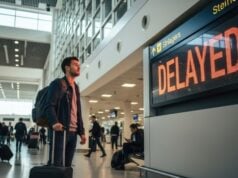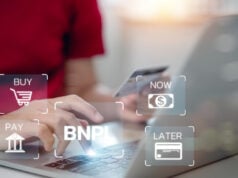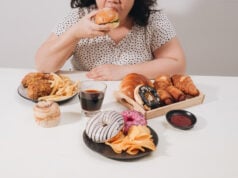South Florida is known for its beaches, nightlife, and multicultural energy – but alongside the palm trees and sunshine, there are real-world risks that can’t be ignored. Rising crime in urban neighborhoods, extreme weather events, and supply chain disruptions have prompted more residents to reconsider their level of preparedness.
From Miami-Dade to Palm Beach, urban preparedness is becoming more than just a niche interest – it’s a smart, practical response to a rapidly changing world. Whether you live in a downtown apartment, a gated suburb, or a rural edge of the city, these tips can help you and your family stay safer, calmer, and more self-reliant.
1. Lock Down the Basics: Securing Your Home
No matter where you live, your home should feel like your safe zone. But many South Floridians – especially renters or new homeowners – don’t always take full control of their security setup.
Start with the basics:
- Reinforce all doors with heavy-duty deadbolts and strike plates.
- Install window sensors and security film to prevent easy break-ins.
- Consider motion-triggered lighting, especially in alleyways or low-visibility areas.
- Use smart locks and doorbell cameras to keep tabs on who’s coming and going.
And don’t underestimate your garage or patio. These are common entry points that criminals target when looking for a quick opportunity. A bit of reinforcement and awareness can deter most would-be intruders.
2. Build a Realistic Emergency Kit
South Florida residents know all too well the effects of hurricanes, flooding, and power outages. But many households still don’t have a proper emergency supply kit.
Your kit should cover essentials for at least 72 hours:
- Bottled water (1 gallon per person per day)
- Shelf-stable food
- Flashlights and extra batteries
- First-aid supplies
- Cash and important documents in waterproof pouches
- Battery-powered radio
- Prescriptions and hygiene supplies
- A backup phone charger or power bank
Don’t forget pet food, baby items, or specialty medical needs. Even if you live in a high-rise with access to city services, being self-sufficient during a power outage or shelter-in-place order is essential.
3. Personal Safety: Self-Defense in an Urban Setting
While South Florida is home to plenty of safe neighborhoods, recent years have brought a rise in violent crimes, break-ins, and carjackings – even in areas once considered low-risk.
As a result, more residents are exploring legal firearm ownership, both for home defense and concealed carry. The state’s permitless carry law, passed in 2023, has made it easier for law-abiding citizens to carry without a formal license (though proper training is still highly recommended).
Among the wide range of calibers available, 10mm ammo is quickly gaining popularity. Known for its stopping power and flat trajectory, 10mm is ideal for those who want something more powerful than 9mm but still manageable for everyday carry or home protection.
10mm is also favored by those who split their time between the city and more rural areas where wildlife encounters are a factor. The caliber’s high energy makes it a favorite among experienced shooters and anyone looking for that extra layer of confidence.
When incorporating firearms into your preparedness strategy, be sure to:
- Train regularly at a certified range.
- Store firearms securely with quick-access safes.
- Know your local and state laws, including when and where you can carry.
- Keep a sufficient supply of 10mm ammo or your caliber of choice on hand to avoid shortages during high-demand periods.
4. Teach, Train, and Talk
Preparedness shouldn’t be a solo project. Your family, housemates, or loved ones should be included in basic safety planning.
Have a conversation about:
- How to exit the home quickly in an emergency
- Where to meet up if separated
- When to call 911 or local authorities
- Who knows how to use the emergency gear – or a firearm – safely
For households with children, practicing calm, age-appropriate drills can prevent panic and confusion in real scenarios. Consider attending local self-defense classes or workshops as a family – they’re often offered at community centers, shooting ranges, or martial arts schools.
5. Stay Aware – But Don’t Live in Fear
Urban preparedness isn’t about paranoia. It’s about control – being proactive instead of reactive.
South Florida is a place of opportunity, diversity, and resilience. But like any urban region, it carries risks that are easier to face when you’re equipped and confident. Whether it’s a hurricane, civil unrest, or a random power outage, the time to prepare is before the headlines hit.
By securing your home, stocking essentials, maintaining situational awareness, and – for many – keeping a personal defense, you’re setting yourself up not just to survive challenges, but to lead others through them.
Preparedness isn’t extreme – it’s common sense. And in a world where unpredictability is the new normal, a little planning goes a long way.
Disclaimer
The information contained in South Florida Reporter is for general information purposes only.
The South Florida Reporter assumes no responsibility for errors or omissions in the contents of the Service.
In no event shall the South Florida Reporter be liable for any special, direct, indirect, consequential, or incidental damages or any damages whatsoever, whether in an action of contract, negligence or other tort, arising out of or in connection with the use of the Service or the contents of the Service. The Company reserves the right to make additions, deletions, or modifications to the contents of the Service at any time without prior notice.
The Company does not warrant that the Service is free of viruses or other harmful components













